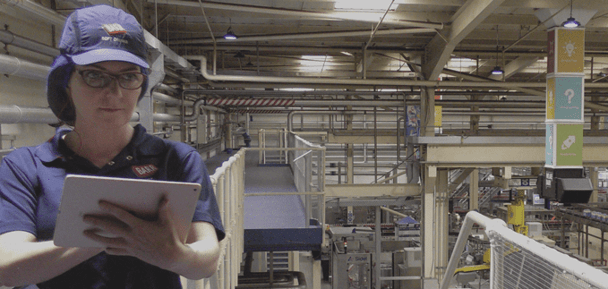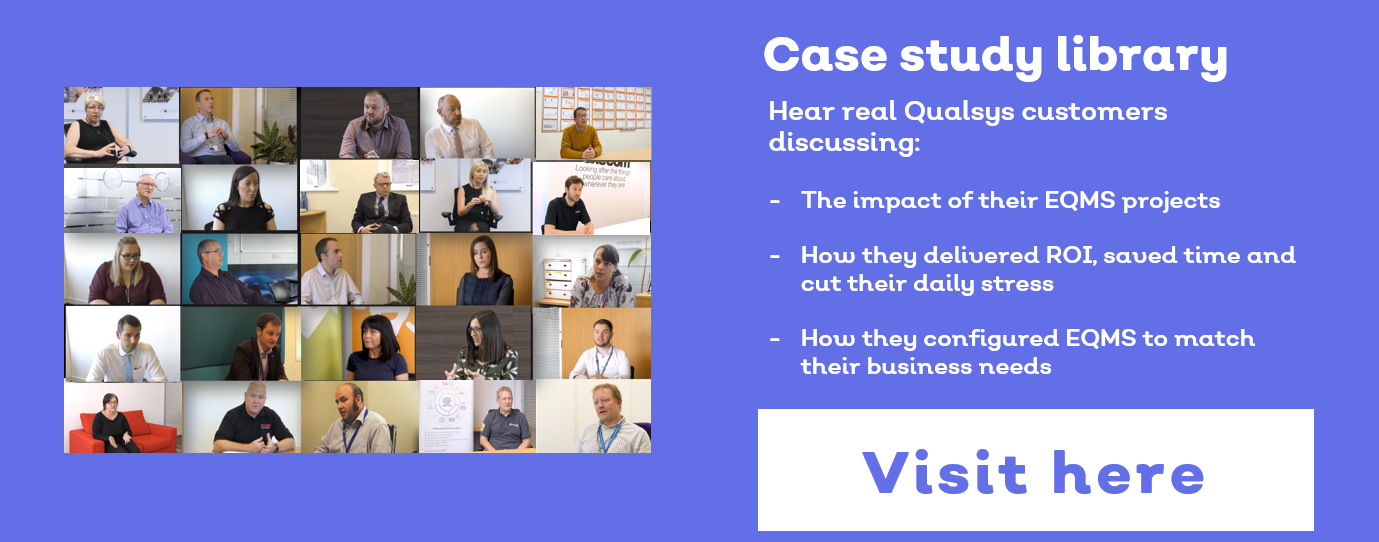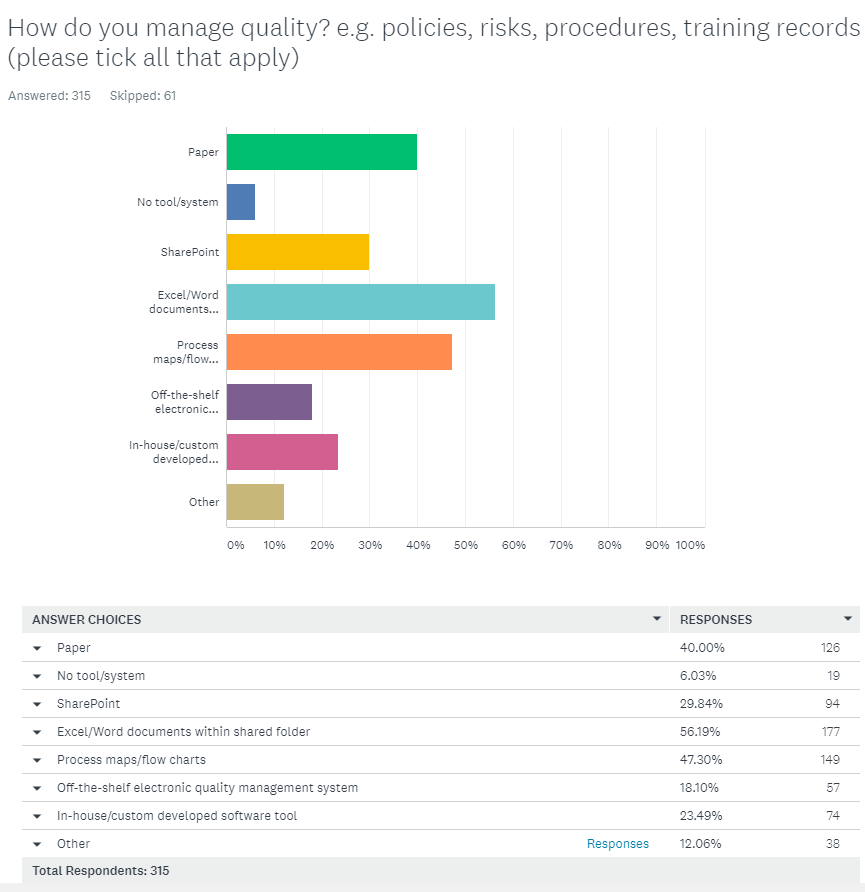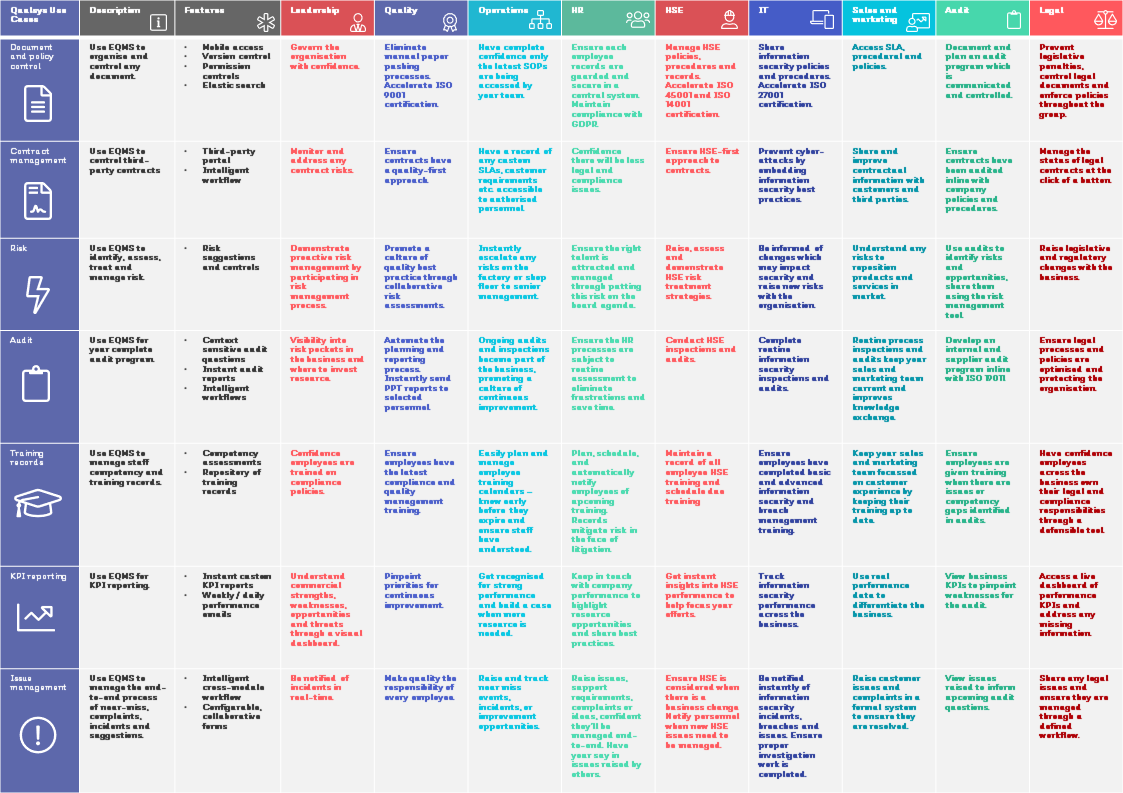Want to contribute to this article?
Davor Markota is the Managing Director of Quality Solutions and vice-president of the Quality Association in his native Croatia.
After a career in ISO 9001 consultancy, Davor switched direction to software implementation, helping SMEs across Europe automate and centralise their quality processes within electronic systems.
Davor shared with Qualsys:
- Why the decline of manual quality systems is 'inevitable'
- Why 'digitisation' isn't enough
- How quality professionals can secure investment from top management
- Typical impact and things to look for in a software system

Qualsys: How did you get into the quality profession, Davor, and why consultancy?
Davor: I had been introduced to quality concepts during my studies and immediately felt it was the right thing for me. My entire managerial career afterwards was influenced by attempting to 'produce' quality and set up quality systems within organisations.
Eventually, I decided to get around the 'other side of the desk' and try to use my experience to consult other business leaders and help them improve their quality approach.
Qualsys: What was missing in the quality approaches you saw, do you think?
Davor: I would always see a small quality team, of 1 or 2 people, in a small office working through Excel spreadsheets and email to try and make their quality systems work.
They'd work hard to get something like an ISO 9001 certificate, for instance - but it wouldn't be properly integrated into the business and different areas would keep on doing different things.
In general, quality systems are introduced into markets through ISO projects and if an implementation runs into a challenge, the reputation of quality is spoiled. The main misconception or misunderstanding is that quality is just a resource-spending project required to get a certificate on the wall.
A consequence is that anything related to quality systems becomes ‘unwanted’ or just seen as procedural.
So quality systems initiatives become considered as costs, not as investments.
I wanted to show businesses how to invest in quality, and for me a big part of that was software.
Qualsys: We see quality managers crying out for investment in their systems all the time, but they often find it difficult to convince their business leaders to spend money on quality.
How can they go about changing that?
Davor: It’s difficult to underline concrete reasons for ‘hard investments’ into quality systems software.
But I don’t think the QMS is an exception to any other software investment project. I would flip the question and ask:
Why do many business leaders not see the QMS as important enough to invest in?
The answer could lie in the strategic position of the QMS. To invest in something, business leaders must know, or at least have a perception of, future benefit.
Sometimes the quality management system is seen as a kind of support office. But more and more business leaders are starting to see it properly: as a strategic driver.
Some have to be convinced of that - and that isn't an overnight activity. We've come a long way in the last 10 years or so, and the Quality Association here in Croatia is doing a lot of work to raise the consciousness of quality, but there's still some way to go.
If the value of quality isn't recognised, the investment fails. But it can be secured by proving the value of quality.
Of course, this is a difficult task, since the quality manager must be involved in the business as a whole in order to explain all potential business impacts.
So I think first of all: the quality manager has to educate themselves about the strategic direction of the company.
That's the first step towards integrating themselves into top management and making sure the quality projects they run are consistent with the overall strategy of the business.
And then quality systems over time will become part of the business strategy and will be invested in.
Sometimes the quality management system is seen as a kind of support office. But more and more business leaders are starting to see it properly: as a strategic driver.
Qualsys: What do you think the typical impact of investing in quality software is? Could you give an example of what one of your clients achieved, for instance?
Davor: One local manufacturer rapidly grew from 40 to 120 workers within a year.
Initially, the bottom-up communication procedure for incidents and non-conformances was performed on paper forms through team managers, and daily and weekly management meetings.
But with their rapid growth of staff, the quantity of information grew exponentially - so reaction time, the quality of information dissemination and overall effectiveness dropped very quickly.
For example, their sales department began to struggle with outdated information - they weren't informed of any results from audits and inspections, and they didn't have visibility of key stats like delivery timeliness.
I was very surprised how much hidden information was revealed.
So we replaced their paper with a web-based incident and NCR application accessible to all employees. Their visibility of non-conformances and incidents shot up, from about 10 reported incidents a month to over 400. That information was then applied for:
- Real-time internal communication to all departments
- Classification of NCR root causes such as: people, machinery, procedures, planning, inventory, material quality, and so on
- Risk management and equipment maintenance processes, and for going deeper into risk analysis
Personally, I was very surprised how much hidden information was revealed.
Before the software, they had no baseline measurement system to track how fast or how safe their processes were. Now they have that information and know where they have to improve. And we even interviewed staff before and after implementation, and after implementation they felt happier and less stressed and felt more comfortable communicating.
Companies are ultimately looking to buy knowledge about themselves.
They want to know where to improve, what direction they should grow in, where things are going wrong.
And it's important to remember that the key success factor of this project was an integrated approach of three elements: people, organisation and technology (POT).
Carefully planned organisational change, a smart HR approach (focused on performance and motivation) and software integration brought these results together.
Qualsys: What should businesses look for in a quality management software system?
Davor: I think there's a big difference between 'digitisation' and 'informatisation'.
Digitisation is just transferring information from non-digital to digital. You can easily say, "here, I've transferred our paper forms into Excel. We're digitised now."
But true informatisation requires integration into your organisational processes.
Proper change management needs exchange of information in real time, and it requires a complex environment where you can quickly see what's happening across different business areas.
Informatisation really represents an integrated organisational drive to improve your communication, generate knowledge, and access and exchange information for decision-making. To achieve this, you need to integrate your operation with technology.

Scottish drinks manufacturer A.G. Barr fully integrated auditing into their operation, with a dedicated mobile audit application pushing reports into a central business intelligence dashboard
So the real value of a good quality management software system is pulling together your QMS aspects into one central space where people can communicate and support the quality system together.
So there's no misuse of documents and they are accessible at any time and place. Information on incidents, NCRs and corrective actions are instantaneous. Internal audit results are shared, risks are visible, new employees are easily integrated in the quality culture. And so on.
What I can feel from this market is that companies are ultimately looking to buy knowledge about themselves.
They want to know where to improve, what direction they should grow in, where things are going wrong.
Quality systems, or at least some parts of them, are already present in most companies. But the tools used to support such a system are usually dispersed and ineffective.
So it's inevitable that businesses will turn to quality software in the future. The pace of change is just too fast for manual processes.
In today's world, real-time information is critical if you want to be competitive. If you stick with paper or spreadsheets, you can never be top of your industry.
Whoever wants to improve productivity and communication needs an integrated system, not just a digitised one.

Further reading
Learn more about the real impact of quality software by visiting our case study library:








Share your thoughts on this article